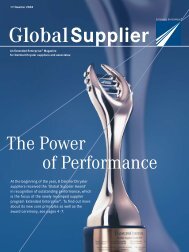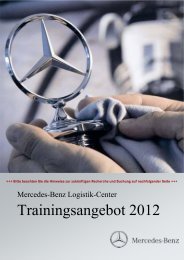GlobalSupplier - Daimler
GlobalSupplier - Daimler
GlobalSupplier - Daimler
Create successful ePaper yourself
Turn your PDF publications into a flip-book with our unique Google optimized e-Paper software.
28 South Africa<br />
News<br />
Naamsa believes the South African<br />
economy remains in relatively good shape<br />
characterised by sound macro economic<br />
and fiscal fundamentals, including,<br />
significant surpluses on the current<br />
account of the balance of payments, benign<br />
inflationary trends, conservative monetary<br />
and fiscal policies, growth in personal<br />
disposable incomes and scope for further<br />
tax reductions.<br />
For 2001, the industry remained on target<br />
to achieve an improvement in aggregate<br />
sales volumes of around 6,5%.<br />
For 2002, however, based on expectations<br />
of slower growth in the South African<br />
economy and the likelihood of fairly steep<br />
new vehicle price increases in January<br />
(and subsequent quarters) as a result of<br />
continuing exchange rate weakness - the<br />
industry had adopted a more conservative<br />
outlook and current expectations ranged<br />
from a no growth scenario, on the one<br />
hand, to marginal growth in new vehicle<br />
sales of 1,4% during the year ahead.<br />
659 3214 54654 3212 3212 32 9875<br />
6564 35 542 6432 6454 545 6345<br />
343 954 654 4687 6552 745 687<br />
654 4687 878 45 629 54 54 3<br />
954 654 4687 3281 354 765 8454<br />
4 224 354 34 4550 65 3554 556<br />
4 54 623 545 354 46 3585 254<br />
4 659 3214 54654 3212 3212 32 9875<br />
6564 35 542 6432 6454 545 6345<br />
54 343 954 654 4687 6552 745 687<br />
54 654 4687 878 45 629 54 54 3<br />
54 654 4687 878 45 629 54 54 3<br />
546 954 654 4687 3281 354 765 8454<br />
4424 224 354 34 4550 65 3554 556<br />
5654 54 623 545 354 46 3585 254954<br />
654 4687 878 45 629 54 54 3<br />
46 954 654 4687 3281 354 765 8454<br />
4 354 34 4550 65 3554 556<br />
545 354 46 3585 254<br />
November sales. New vehicle sales<br />
reported by Naamsa for November<br />
recorded further encouraging gains, and<br />
at 32 006 units reflected a year on year<br />
improvement of 11% compared to the same<br />
month last year when 28 813 sales had<br />
been recorded.<br />
Naamsa says the increase was helped by<br />
pre-emptive purchases to avoid generally<br />
anticipated sharp new vehicle price<br />
increases early in 2002. November’s new<br />
passenger car sales at 19 865 units<br />
reflected an improvement of 1102 units or<br />
5,9% compared to November 2000.<br />
However, compared to October 2001, an<br />
exceptionally strong month for new car<br />
sales, the November sales reflected a fall of<br />
454 6314<br />
464 3222<br />
932 9875<br />
1860 units or 8,5%.<br />
996 7564<br />
432 9454<br />
396 6842<br />
Sales of new light commercial vehicles,<br />
bakkies and minibuses maintained strong<br />
upward momentum during November, and<br />
at 10 938 units was an improvement<br />
of 2034 units or 22,8% compared to<br />
November last year and a slight<br />
improvement of 54 units or 0,5% compared<br />
to October.<br />
The medium and heavy truck segments<br />
turned in a mixed performance with<br />
a drop of 6,6%, for mediums but a<br />
sharp improvement of 14,3% for heavies<br />
compared to November last year.<br />
Combined commercial vehicle sales in<br />
recent months were at the top end<br />
of industry predictions and suggested<br />
an improvement in fixed investment<br />
sentiment in the South African economy.<br />
As expected, exports for October, the latest<br />
available month, staged a strong surge<br />
of 36,3% compared to September, and<br />
aggregate year-to-date new vehicle exports<br />
are now 57,8% ahead of the corresponding<br />
ten months of last year.<br />
Up to the end of October this year, 78 930<br />
cars have been exported, compared to 47<br />
416 during the same period last year<br />
Job losses. The number of persons<br />
employed by the South African new vehicle<br />
manufacturing industry - comprising seven<br />
major new vehicle manufacturers and<br />
eight specialist commercial vehicle manufacturers<br />
- dropped by 210 compared with<br />
the end of September last year to a total<br />
in the last pay week of September 2001 of<br />
32 488.<br />
However, Naamsa said industry<br />
employment numbers have been relatively<br />
stable and at current levels continue to<br />
be modestly ahead of the average monthly<br />
employment level for the 2000 calendar<br />
year of 32 280 jobs.<br />
Three major manufacturers, including<br />
DCSA, now work on a multi-shift basis to<br />
produce cars for export markets while the<br />
balance of the industry tends to operate<br />
11%<br />
Tough year predicted for 2002<br />
South Africa’s vehicle sales have shown an 11% increase on last year on the back of strong light and heavy<br />
commercial vehicle sales, but the National Association of Automobile Manufacturers of South Africa (Naamsa)<br />
cautions that the global economic slowdown will also put the brakes on domestic growth.<br />
on a single shift basis, although a number<br />
operate double shifts in certain production<br />
areas.<br />
Component supply. The availability and<br />
supply of imported original equipment<br />
components during the third quarter<br />
remained good, and prices from source<br />
country remained stable.<br />
However, upward price pressure on<br />
imported components continues to be<br />
experienced due to the weakening Rand.<br />
The availability of imported raw materials,<br />
where applicable, remained good and<br />
price movements remained a function<br />
of material prices on the London Metal<br />
Exchange and the Rand exchange rate.<br />
In local supply, fuel and energy costs and<br />
increases in steel prices continued to place<br />
upward pressure on costs.<br />
Local steel quality and delivery<br />
performance continued to improve, with<br />
local steel prices remaining a source of<br />
concern and continue to be the subject<br />
of ongoing discussions between Iscor and<br />
vehicle manufacturers.<br />
Production capacity. Average motor<br />
vehicle assembly industry capacity<br />
utilisation levels improved during the third<br />
quarter and continued to reflect conditions<br />
in the domestic and export markets.<br />
The averages for the third quarter ranged<br />
between 64,7% capacity utilisation for<br />
Light Commercial Vehicles to 80,5% for<br />
Medium CVs. Passenger Car capacity<br />
utilisation averaged 73,9%.<br />
Naamsa said that South Africa’s vehicle<br />
manufacturing capacity utilisation rate<br />
continued to trend upwards closer to the<br />
global average capacity utilisation rate of<br />
about 76,0%.<br />
89586



![Download Global Supplier Magazin [Ausgabe 02/2003] - Daimler](https://img.yumpu.com/20737092/1/190x253/download-global-supplier-magazin-ausgabe-02-2003-daimler.jpg?quality=85)
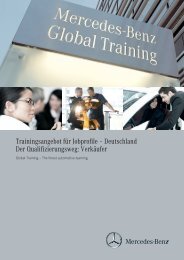
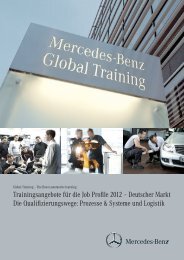

![Download Global Supplier Magazin [Ausgabe 02/2002] - Daimler](https://img.yumpu.com/9325024/1/190x248/download-global-supplier-magazin-ausgabe-02-2002-daimler.jpg?quality=85)
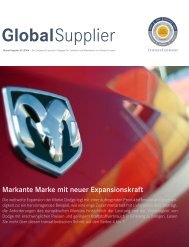
![Download Global Supplier Magazin [Ausgabe 01/2003] - Daimler](https://img.yumpu.com/8073798/1/190x253/download-global-supplier-magazin-ausgabe-01-2003-daimler.jpg?quality=85)
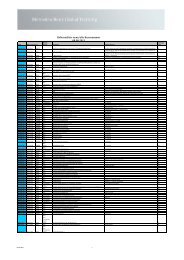
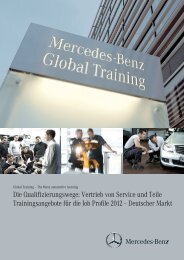
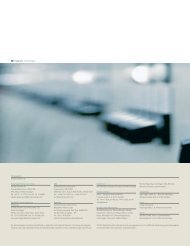
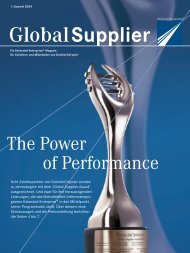
![Download Global Supplier Magazin [Ausgabe 02/2007] - Daimler](https://img.yumpu.com/5703060/1/190x247/download-global-supplier-magazin-ausgabe-02-2007-daimler.jpg?quality=85)
